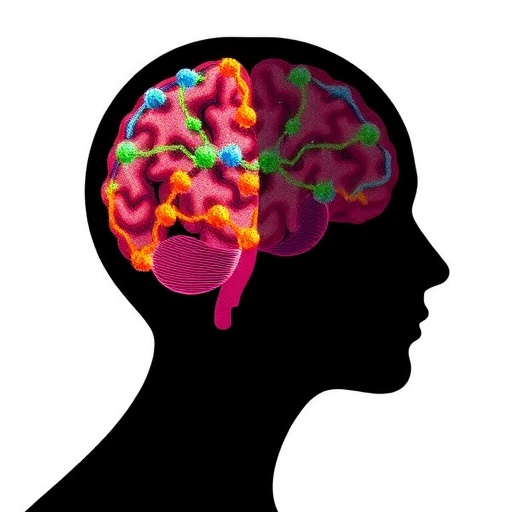
In a groundbreaking study set to redefine our understanding of neurodegenerative diseases, researchers have performed an unprecedented proteomic analysis of cerebrospinal fluid (CSF) from individuals with Down syndrome (DS). This investigation critically compares the molecular landscape of DS-associated neuropathology with that found in late-onset Alzheimer’s disease (LOAD) and autosomal dominant Alzheimer’s disease (ADAD), yielding insights that could revolutionize diagnostics and therapeutic interventions. As the first large-scale, comparative proteomic study across these conditions, the research uncovers unique and overlapping protein signatures, illuminating the complex interplay of genetic and pathological factors driving neurodegeneration.
Down syndrome, caused by trisomy of chromosome 21, is well known for its association with early-onset Alzheimer’s disease-like neuropathology. By mid-adulthood, nearly all individuals with DS exhibit deposition of amyloid-beta plaques and neurofibrillary tangles typical of Alzheimer’s disease. However, despite the clinical and pathological similarities, it has remained uncertain whether the molecular mechanisms of neurodegeneration in DS mirror those in LOAD or the genetically-driven ADAD. To address this outstanding question, the scientists employed advanced mass spectrometry-based proteomics to dissect the CSF proteome, offering a window into the brain’s biochemical changes non-invasively.
Utilizing state-of-the-art tandem mass tag (TMT) labeling mass spectrometry, the research team conducted a high-resolution, quantitative analysis of CSF samples from cohorts representing DS, LOAD, and ADAD. This approach allowed them to detect and quantify thousands of proteins simultaneously, capturing subtle differences in protein expression patterns that elude traditional biochemical methods. The depth and precision of this proteomic profiling highlighted distinct molecular footprints characterizing each condition while underscoring the nuanced convergence of pathogenic pathways.
.adsslot_PCl0I6OZAm{ width:728px !important; height:90px !important; }
@media (max-width:1199px) { .adsslot_PCl0I6OZAm{ width:468px !important; height:60px !important; } }
@media (max-width:767px) { .adsslot_PCl0I6OZAm{ width:320px !important; height:50px !important; } }
ADVERTISEMENT
One of the striking findings from this analysis was the identification of a proteomic signature uniquely enriched in DS-CSF samples, suggesting that trisomy 21 induces molecular perturbations beyond the classical Alzheimer’s pathology. Proteins involved in immune response modulation, synaptic function, and cellular metabolism were differentially expressed, indicating multifaceted dysfunction in DS neuropathology. These alterations hint at the possibility that therapeutic strategies effective for LOAD or ADAD may require adaptation to address DS-specific molecular changes.
Simultaneously, overlap in protein dysregulation was observed between DS and both LOAD and ADAD, particularly in pathways implicated in amyloid processing, tau phosphorylation, and neuroinflammation. This molecular overlap reinforces the concept that Alzheimer’s pathology shares a common neurodegenerative core regardless of disease etiology but also reveals that the genetic underpinnings in DS confer additional, distinctive proteomic alterations. These insights pave the way for biomarker development that can differentiate among Alzheimer’s phenotypes and more precisely monitor disease progression in heterogeneous populations.
Crucially, the study sheds light on the role of neuroinflammation as a shared pathological hallmark. Increased levels of complement cascade proteins and microglial activation markers were detected across all three groups, underscoring neuroimmune interactions as a significant etiological contributor. This points to neuroinflammation not only as a consequence of amyloid and tau pathology but potentially as an early driver of neurodegeneration. Therapies aimed at modulating immune responses in the brain could, therefore, have broad applicability across various forms of Alzheimer’s disease, including DS-associated dementia.
Moreover, alterations in lipid metabolism proteins emerged as a key differentiator, particularly in DS and ADAD groups, further distinguishing these from LOAD. Lipid homeostasis is increasingly recognized as central to neuronal health and amyloid precursor protein processing. Disruptions in this sphere might explain the accelerated disease trajectory observed in DS and families with dominant mutations. Targeting lipid metabolic pathways could represent a novel intervention avenue deserving of rigorous exploration.
The proteomic data also revealed changes in synaptic proteins, suggesting that synaptic loss and dysfunction occur through somewhat divergent mechanisms in DS versus typical Alzheimer’s disease. This finding provides a mechanistic rationale for cognitive decline differences and might inform tailored cognitive therapies or pharmaceutical interventions designed to preserve synaptic integrity according to the underlying cause of dementia.
Technological advances underpinning this study, including the integration of cutting-edge bioinformatics tools and machine learning algorithms, empowered the researchers to parse complex protein interaction networks and enrich pathway analyses. This comprehensive systems biology approach transcends reductionist methods, offering a holistic view of disease processes. It further enables predictive modeling of disease progression and therapeutic response with unprecedented granularity.
The implications of this work extend beyond academic knowledge, carrying immediate potential for clinical translation. The identification of specific CSF biomarkers could improve early diagnostic accuracy in individuals with DS, enabling timely intervention before overt cognitive deficits confound management. In addition, stratifying Alzheimer’s disease patients based on proteomic profiles may enhance clinical trial design by ensuring homogeneous study populations and facilitating biomarker-driven outcome measures.
By comparing autosomal dominant Alzheimer’s disease with DS and late-onset variants, the research underscores the profound impact of genetic background on neurodegenerative disease manifestation. Understanding how trisomy 21 intersects with Alzheimer’s pathology broadens our comprehension of genotype-phenotype relationships, fostering the development of precision medicine approaches tailored to genetic risk profiles.
Despite the promise, the authors acknowledge that further longitudinal and multi-omic studies are necessary to delineate causal mechanisms definitively and confirm findings in larger, diverse populations. Longitudinal CSF sampling coupled with neuroimaging and cognitive assessments will be critical in validating proteomic biomarkers as prognostic tools. Moreover, integrating genomic, transcriptomic, and metabolomic data could unravel additional molecular layers influencing disease heterogeneity.
Overall, this landmark proteomic comparison represents a milestone, enriching the neurodegeneration research landscape with critical data that challenge existing paradigms. By elegantly dissecting the cerebrospinal molecular milieu in Down syndrome and Alzheimer’s disease variants, the study provides a roadmap for future investigations aimed at deciphering the intricate biology underlying dementia and ultimately advancing therapeutic innovation.
As the field of neuroproteomics accelerates, the combination of sophisticated analytical technologies and interdisciplinary expertise promises to usher in a new era of biomarker discovery and mechanistic understanding. This work by Montoliu-Gaya and colleagues not only epitomizes this progress but also highlights the enduring need to contextualize molecular data within the complexities of genetic and clinical diversity in neurodegeneration.
With AD prevalence rising globally and Down syndrome populations aging, these findings possess urgent public health relevance. They emphasize the importance of inclusive research frameworks that incorporate genetically distinct groups to comprehensively address Alzheimer’s disease. Such inclusive efforts will empower clinicians, researchers, and policymakers to devise more equitable and effective strategies against dementia worldwide.
In summary, by leveraging advanced proteomic technologies and comparative analyses, this study charts new territory in the quest to unravel the multifaceted etiology of Alzheimer’s disease in Down syndrome and beyond. It stands as a testament to the power of molecular science to illuminate hidden disease pathways and inspire hope for transformative breakthroughs in the battle against neurodegeneration.
Subject of Research: Proteomic analysis of cerebrospinal fluid in Down syndrome compared to late-onset and autosomal dominant Alzheimer’s disease.
Article Title: Proteomic analysis of Down syndrome cerebrospinal fluid compared to late-onset and autosomal dominant Alzheimer’s disease.
Article References:
Montoliu-Gaya, L., Bian, S., Dammer, E.B. et al. Proteomic analysis of Down syndrome cerebrospinal fluid compared to late-onset and autosomal dominant Alzheimer´s disease. Nat Commun 16, 6003 (2025). https://doi.org/10.1038/s41467-025-61054-z
Image Credits: AI Generated
Tags: amyloid-beta plaques in Down syndromeCSF proteome and neurodegenerationdiagnostics for neurodegenerative disordersDown syndrome and Alzheimer’s disease comparisongenetic factors in Down syndrome and Alzheimer’slate-onset Alzheimer’s disease biomarkersmass spectrometry in neurobiologyneurodegenerative diseases researchproteomic analysis of cerebrospinal fluidtherapeutic interventions in Alzheimer’strisomy 21 and Alzheimer’s neuropathologyunique protein signatures in dementia



